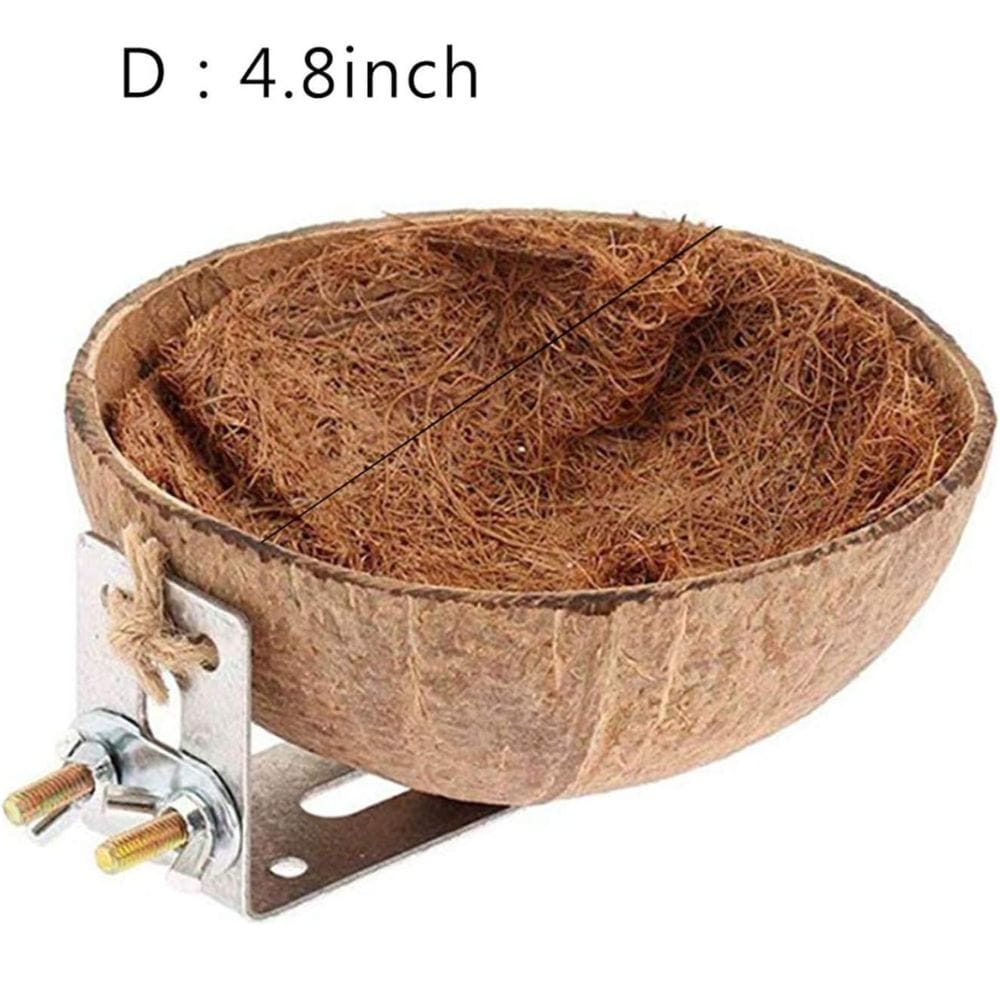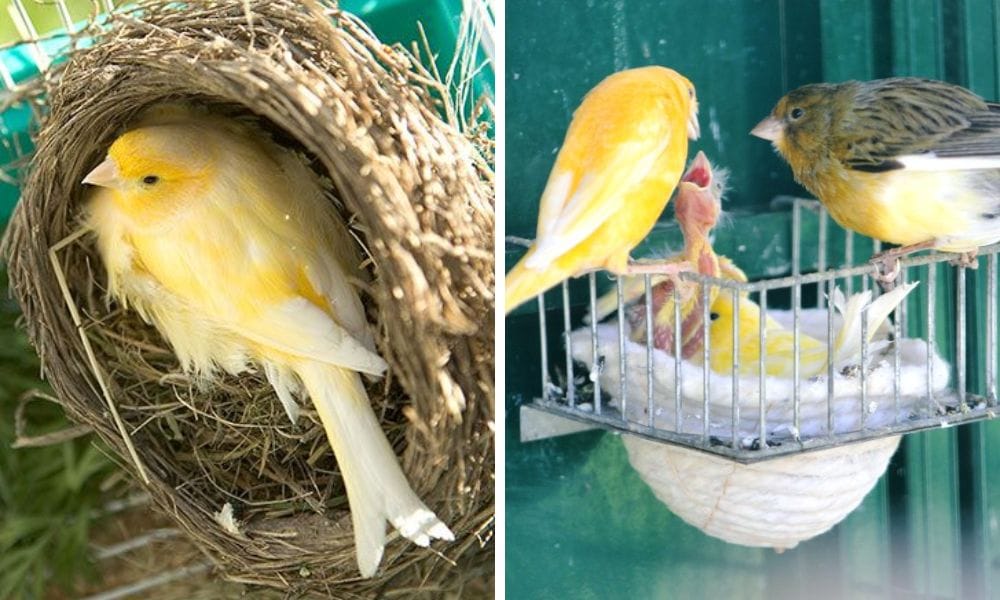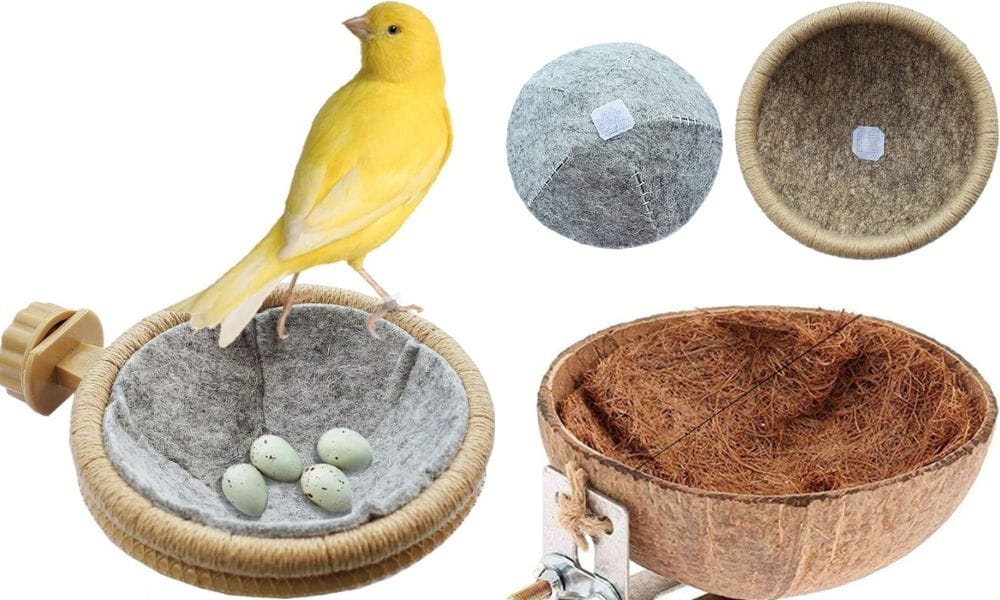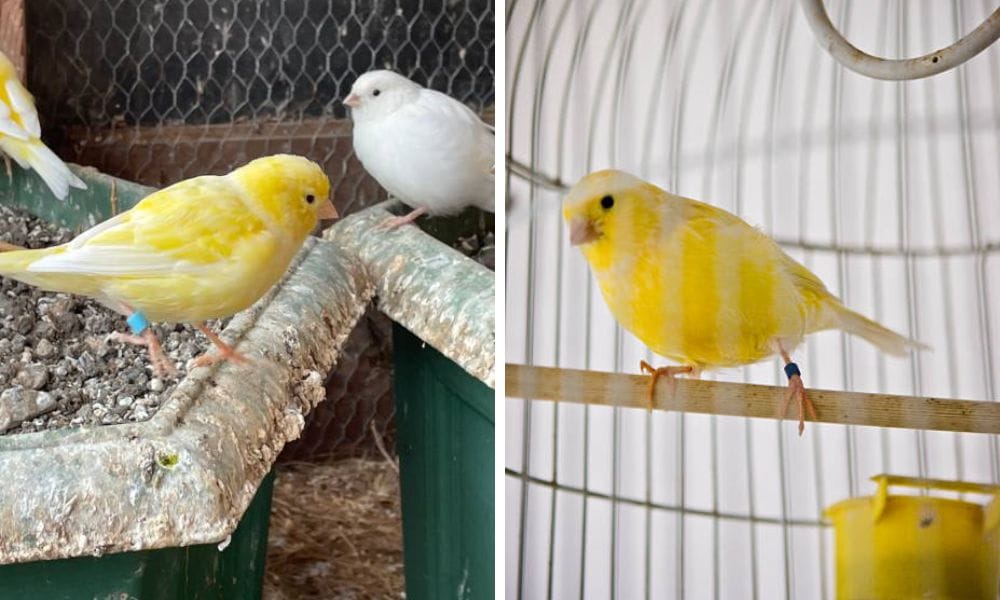Understanding the Design and Purpose of Canary Nest
Get ready to finally create the perfect nest for your canary, because we've got all the tips and tricks you need for perfect canary nest.

Canaries are delightful songbirds that have been cherished by bird enthusiasts for centuries. Their vibrant colors and melodious tunes make them a popular choice for a family pet. However, to ensure the health and happiness of these birds, it's crucial to understand the intricacies of their nesting preferences and requirements. This article will delve into the design and purpose of canary nests, providing you with all the information you need to create the perfect home for your feathered friends.
Key Takeaways:
- The design of a canary nest is crucial for the bird's comfort and breeding success.
- Location and material selection are key factors in nest building.
- Understanding canary nesting behavior can enhance the care provided to these birds.
Choosing the Right Canary Nest
Choosing the right canary nest is crucial for the health and well-being of your birds. With various types of nests available, including plastic, bamboo, and metal, it’s essential to consider the specific needs of your canaries. When selecting a nest, consider the size of your birds, the type of cage they inhabit, and the materials used to construct the nest. A well-chosen nest will provide a comfortable and safe space for your canaries to breed and raise their young.
The Ideal Canary Nest Design
When searching for the perfect canary nest, the design is paramount. Canaries prefer a nest that mimics the natural structures they would choose in the wild. A typical canary nest is deep and bowl-shaped, allowing enough space for the bird to sit comfortably and care for its eggs. The diameter (dia) of the nest should be just right—not too wide that the eggs spread out and not too small that the canary feels cramped. The style of the nest often varies, with options ranging from simple bamboo nests to more elaborate metal designs sold on various pet supply sites.

Material Matters: Natural Materials
The selection of materials for a canary nest is not to be taken lightly. A plastic nest offers significant advantages, such as ease of cleaning and durability compared to other natural materials like bamboo and metal. Natural fibers like bamboo are often accepted by canaries due to their softness and resemblance to what they would use in the wild. On the other hand, metal nests can be lined with soft nesting materials to ensure comfort. It’s important to review the stock of available nests and read comments or reviews to understand which materials are best suited for your canary family. Additionally, many pet owners find it convenient to purchase ready-made nesting supplies from online stores.
Benefits of Using a Plastic Nest
Plastic nests offer several benefits for canary owners. They are easy to clean and maintain, making them a hygienic choice for breeding canaries. Plastic nests are also durable and long-lasting, withstanding the wear and tear of frequent use. Additionally, plastic nests are often less expensive than other types of nests, making them a cost-effective option for canary owners. When choosing a plastic nest, look for one made from high-quality materials that are safe for your birds.
Location is Key
The location of the canary nest within the cage is a critical factor for the birds' well-being. Canaries need a quiet, sheltered spot away from the hustle and bustle of household activity. The nest should be placed at a moderate height in the cage to save the birds from potential stressors and to make them feel secure. It's also essential to refresh the nesting area regularly to maintain hygiene and comfort.
Placement and Installation of the Nest
When placing the canary nest, it’s crucial to ensure it is securely attached to the cage using the provided adapters or holder. This prevents the nest from falling or shifting, which could cause distress or harm to the birds. Position the nest in a corner of the cage, away from direct sunlight and drafts, to create a comfortable and safe environment for your canaries.
The nest should be placed at a height that allows the canaries to easily access it, with the top of the nest at least 4 inches from the top of the cage. This positioning helps the birds feel secure while also making it easier for you to monitor and maintain the nest. Avoid placing the nest near food and water dishes or perches, as this can create a mess and complicate cleaning efforts.
For breeding canaries, it’s recommended to provide two nests per pair. This allows the female to start a new nest before the first chicks leave the old one, ensuring continuous breeding success. When installing the nest, make sure it is level and secure to prevent baby canaries from falling out.
Consider adding a sign or label to the cage to indicate the location of the nest, especially if you have multiple cages or a large aviary. This can help you quickly identify and manage the nesting areas, ensuring each pair of canaries has the best possible environment for breeding and rearing their young.
Creating a Comfortable Breeding Environment
Creating a comfortable breeding environment is essential for the success of your canary breeding program. A well-designed breeding environment should include a spacious cage with ample room for flight and exercise. The cage should also be equipped with a suitable nest, such as a plastic canary nest, that provides a safe and comfortable space for breeding. In addition to a suitable nest, the breeding environment should also include a balanced diet, fresh water, and a clean and well-ventilated space. By providing a comfortable breeding environment, you can help ensure the health and well-being of your canaries and increase the chances of successful breeding.
Selection and Options
When it comes to selecting a canary nest, bird owners are presented with a plethora of options. From the full page of search results, it's important to add only the most suitable nests to your cart. Consider the size of your cage and the number of canaries you have. Some nests are sold as complete sets, while others may require additional materials or accessories. Always contact the seller if you have questions about the nest's compatibility with your setup.

Nesting Behavior and Care
Understanding canary nesting behavior is crucial for providing optimal care. Canaries exhibit certain signs when they are ready to nest, such as gathering materials or becoming more territorial. Observing these behaviors can help you determine the right time to place the nest in the cage. Additionally, ensure that the birds have access to proper nutrition to support the energy demands of nesting and rearing young.
Tips for Using a Canary Nest Effectively
Choosing a high-quality plastic canary nest is essential for durability and ease of cleaning. Products like the Heavy Duty Plastic Canary Nest with Adapters for Hanging on Wood Cages (N014) are excellent options. Providing a variety of nesting materials, such as cotton or felt liners, gunny sack, and bathroom tissue, allows the canaries to select what best suits their preferences and nesting instincts.
Keeping the nest clean and dry is vital. Regularly remove soiled bedding and replace it with fresh material to maintain a healthy environment. Monitor the nesting pair regularly, providing care and attention as needed to ensure their well-being and promote breeding and nesting behavior.
Consider adding a metal or plastic holder to the cage to provide additional support and stability for the nest. When selecting a nest, consider the diameter and depth, as well as the type of canaries you are keeping, to ensure the nest meets their specific needs. Reading reviews and product descriptions carefully before making a purchase can help you choose a high-quality nest that meets your requirements.
Keep the area outside of the nest clean and free from debris to prevent the spread of disease and pests. Add the nest to your cart and stock up on nesting materials to ensure you have everything needed to provide a comfortable and safe environment for your canaries.
By following these tips, you can effectively use a canary nest to promote breeding and nesting behavior in your canaries, providing them with a happy and healthy environment.
Maintenance and Hygiene
Maintaining the cleanliness of the canary nest is vital for the health of the birds. Regularly check the nest for signs of wear or damage and replace it when necessary. Cleaning the nest involves removing old nesting materials, washing the nest with a bird-safe disinfectant, and allowing it to dry completely before adding fresh materials. This routine helps prevent the spread of diseases and keeps the canary family safe and healthy.
Looking for a new canary nest? We have put together our list of top 3 canary nests below.

Summary
In summary, the design and purpose of canary nests are integral to the health and breeding success of these charming birds. By considering factors such as design, material, location, and nesting behavior, you can provide a comfortable and safe environment for your canaries. Remember to maintain the nest's cleanliness and refresh the setup as needed to ensure your birds thrive.

FAQ Section
Q: What is the best material for a canary nest? A: The best material for a canary nest is typically natural fibers like bamboo, which provide comfort and mimic their natural environment. A bamboo nest made from natural materials is often preferred by canaries. However, metal nests lined with soft materials are also acceptable.
Q: Where should I place the canary nest in the cage? A: The canary nest should be placed in a quiet, sheltered location within the cage, at a moderate height to provide a sense of security for the birds.
Q: How often should I clean the canary nest? A: The canary nest should be checked regularly for cleanliness and signs of wear. It should be cleaned with a bird-safe disinfectant and refreshed with new materials as needed to maintain hygiene and prevent disease.

